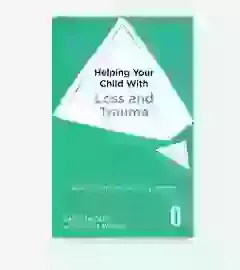Using The Five Principles Approach to Support Your Child Through Trauma
Healing from loss and trauma at any age is difficult, but it can be particularly hard for children. Clinical psychologist David Trickey and chartered health psychologist Vicky Lawson have put together helpful advice and practical tips to help children during difficult times in Helping Your Child with Loss and Trauma.
Maximising Chances of Recovery
However much you wish you could, you can’t change what has already happened to your child. But you CAN do a great deal about what happens now using The Five Principles Approach to shape the sort of environment and support that will promote recovery and give your child the best chance of adjusting to what has happened. As well as guiding your general approach, the principles can also be used in specific situations to help you make particular decisions.
The Five Principles focus on helping your child to feel:
- Safe
First, make sure that your child is actually safe, and protected as much as reasonably possible from further events. But this principle is not just about their actual safety, it’s also about their felt sense of safety.
Make sure that their basic needs are being met before you worry about anything else. Do they have food, drink and shelter – and do they know that? It’s difficult to help a child feel safe if they are not sure where their next meal is coming from, or if they don’t know where they will be sleeping or who is going to be around when they go to bed. Cuddly toys or other personal possessions can be extremely important to children, and they may take a great deal of comfort from being reunited with them.
- Calm
It is completely normal for children to be upset or distressed immediately after such events. Their strong reactions are not necessarily a cause for concern. In the early stages, rather than trying to stop their emotions, it might be more useful to let them express their emotions, with you there with them (if that’s what they want). Have you ever opened a bottle of fizzy drink, only to find that someone had shaken the bottle up and suddenly the drink is spraying everywhere? If you try to push the top back on, you actually end up making it spray more and for longer, but if you let the spray out, then after a short while it stops spraying. Rather than trying to suppress your child’s distress, what happens if you just sit with them and let them cry or be angry or whatever? That way they won’t feel they have to hide their feelings from you and experience them on their own. They might feel embarrassed or ashamed about how they are feeling, or might even be scared by some of their reactions. If you are able to find out how they are doing, and then help them to see their strong reactions as a response to their loss or trauma, then they may feel less troubled by them.
- Socially supported and connected
Most children, even those that find relationships difficult, do better when they feel connected to, and supported by, others. Generally, a child who feels they have an attachment to a loving and caring adult will be more likely to be able to cope with difficulties. That sense of being connected can be very comforting, even if the person to whom they feel connected is not present. This feeling connected and supported is one thing that may help your child recover and get through a loss or trauma.
There is some research that shows that holding someone’s hand changes the way that your brain reacts to an adverse situation, and that effect is stronger if the person is someone you know, love and trust, although it still makes a bit of a difference even if it’s someone you’ve only just met.
Social support and connection is important, and can help following loss and trauma – but often that’s just when children find themselves, or make themselves, more isolated. You can help your child, by ensuring they are as supported and connected as they want to be. You could think about your own role but also the role of others (such as friends, extended family, school staff, neighbours, etc.) in providing support and connection.
- In control
When we talk here about ‘feeling in control’, it’s not quite as simple as having choices and being able to make decisions, although that is part of it. It’s more about a sense of ‘self-efficacy’, which means that your child has confidence in their ability to influence things around them in a positive way. It’s more than simply feeling that you have some control over things, it means believing that you have control over some things and that you can use that control to solve problems that will have a positive impact on your life and wellbeing.
As their carer, you are really well placed to help your child to see things differently. This might mean helping them to have successes, even mini ones, and then helping them to notice how they are able to influence things around them. Or there may be other ways that you can help by repairing their self-confidence so that it is as strong as it was before the loss or trauma, or it might be a case of re-booting it. One way of thinking about this is to provide them with plenty of ‘evidence’ that undermines their sense that they can’t do things successfully and points to how much control they do have. This can start to make the idea that they can do things that lead to a positive impact for them increasingly irrefutable.
- Hopeful
It’s important to remember that being optimistic and hopeful about the future does NOT mean minimising what has happened or trying to railroad your child to think positively. However, research does show that people who are able to remain optimistic despite their experiences of loss and trauma tend to have a better recovery.
You can help your child to remain hopeful. You can help them to see themselves as able to cope and able to affect things around them. Actively avoiding talking about the past is unlikely to be helpful, but you can help to keep their focus balanced between the past, the present and the future. Without trying to distract them from the past, you could ask them about their plans for the future, or what they will be doing in one year’s time, or what they are looking forward to in the next six months, or even just the next two weeks.




